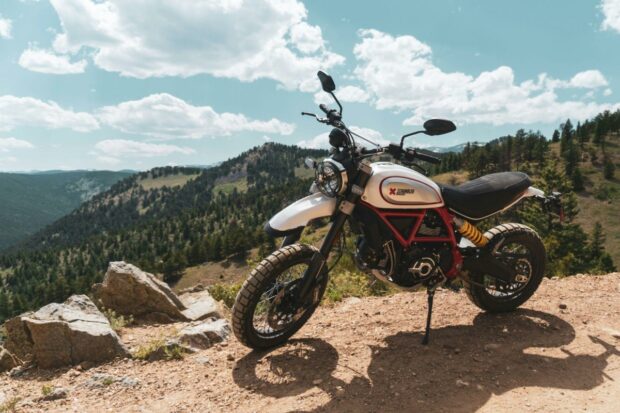Embracing the Thrill of Off-Roading: Essential Tips for Beginners
Off-roading isn’t just a pastime; it’s an exhilarating experience that ignites the senses and fuels the adventurous spirit within. Whether you’re drawn to the rugged terrain of mountains, the vastness of deserts, or the challenge of muddy trails, off-roading promises excitement like no other. However, diving into this exhilarating world requires preparation, knowledge, and respect for the environment and the machinery you’ll be riding.

Essential Gear and Preparations
Before venturing off-road, it’s crucial to equip yourself with the right gear and undertake necessary preparations. Here’s what you’ll need:
- Off-Road Motorcycle: Invest in a bike specifically designed for off-roading, with features like durable suspension, knobby tires for traction, and protective guards.
- Safety Gear: Prioritize safety by wearing a DOT-approved helmet, goggles or a helmet visor, sturdy boots, gloves, knee and elbow pads, and a chest protector.
- Tools and Spare Parts: Carry essential tools and spare parts, including tire repair kits, wrenches, spark plugs, and duct tape, to handle minor repairs on the trail.
- Navigation and Communication: Bring a GPS device or a map and compass to navigate unfamiliar terrain. Additionally, consider carrying a communication device like a two-way radio or a satellite phone for emergencies.
- Hydration and Nutrition: Stay hydrated by carrying an adequate supply of water and pack nutritious snacks to fuel your body during long rides.
Riding Techniques: Mastering the Basics
Off-roading demands a different set of skills compared to riding on paved roads. Here are some fundamental techniques to master:
- Body Positioning: Maintain a balanced and relaxed stance on the bike, with your elbows bent, knees gripping the bike, and weight shifted forward or backward depending on the terrain.
- Throttle and Braking Control: Learn to modulate the throttle smoothly to control acceleration and traction. Practice using both brakes—front and rear—appropriately to maintain control and stability.
- Reading Terrain: Develop the ability to anticipate changes in terrain and adjust your speed and line accordingly. Look ahead and scan the trail for obstacles, such as rocks, ruts, and sand.
- Cornering Techniques: Master the art of cornering on loose surfaces by leaning the bike into turns while maintaining traction and control. Use your body weight to steer and counterbalance the bike.
- Obstacle Negotiation: Practice techniques for navigating common obstacles like logs, rocks, and steep inclines. Learn to lift the front wheel over obstacles and use momentum to carry you through challenging terrain.
Safety First: Injury Prevention and Risk Management
Off-roading, while exhilarating, carries inherent risks. Here are some tips to minimize the risk of injury:
- Ride Within Your Limits: Know your skill level and avoid attempting terrain or obstacles beyond your capabilities. Progress gradually and practice in controlled environments before tackling more challenging trails.
- Wear Proper Safety Gear: Always wear appropriate safety gear, including a helmet, goggles, and protective clothing. Invest in high-quality gear that provides adequate protection against impact and abrasion.
- Ride with Others: Whenever possible, ride with a group or at least one other person. Group riding enhances safety by providing support in case of emergencies and sharing knowledge and experience.
- Stay Alert and Sober: Off-roading requires focus and concentration. Avoid riding under the influence of alcohol or drugs, as impaired judgment significantly increases the risk of accidents.
- Know When to Stop: Listen to your body and recognize signs of fatigue or discomfort. Take breaks as needed to rest, hydrate, and recharge before continuing your ride.
If you get into an accident on your off road motorcycle, be sure to contact a Long Beach motorcycle accident lawyer for legal help to get compensation.
Handling Repairs and Maintenance on the Trail
Off-roading can put your bike through rigorous conditions, increasing the likelihood of mechanical issues. Here’s how to handle common repairs on the trail:
- Flat Tires: Carry a tire repair kit and know-how to patch or plug a punctured tire. Use tire levers to remove the tire from the rim, locate the puncture, and apply the necessary repair.
- Chain Maintenance: Inspect your chain regularly for signs of wear or damage. Carry a chain breaker and spare links to address issues like a broken or stretched chain.
- Electrical Problems: Carry spare fuses and basic electrical tools to troubleshoot and repair common electrical issues, such as a blown fuse or loose connections.
- Fluid Leaks: Check fluid levels before each ride and carry spare fluids, such as oil and coolant, to top up if necessary. Address fluid leaks promptly to prevent damage to vital components.
- Basic Tool Kit: Pack a compact tool kit with essential tools, including wrenches, screwdrivers, pliers, and a multi-tool, to perform minor repairs and adjustments on the trail.
By following these tips and techniques, you’ll be well-equipped to embrace the thrill of off-roading while minimizing risks and ensuring a safe and enjoyable experience. Remember to respect the environment, fellow riders, and local regulations as you explore the great outdoors on two wheels.
